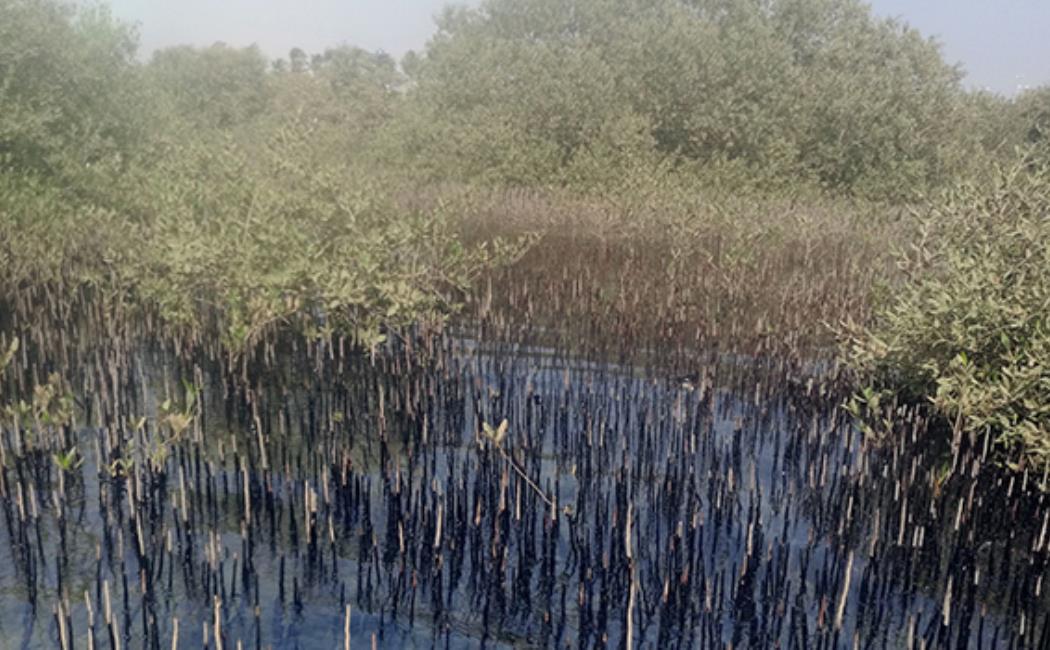
Spilling the story of oil in the Arabian Gulf
18 July, 2019
Marine sediments tell the history of an environment, including oil spills. By "reading" sediments from the past century, a research team has now determined how much oil hydrocarbon is accumulated in different vegetated coastal habitats of the Arabian Gulf and the significance of this for environmental management.
In the early 1900s, the world’s second-largest and most productive oil resource was discovered in the Arabian Gulf. Today, the Gulf produces nearly half of the oil in the global market. In oil-producing areas, incidental spills, leakages and emissions are unavoidable. However, these spills have considerable impacts on surrounding marine habitats. The world’s largest spill took place here, during the Gulf War in 1991, with more than a million tons of crude spilling directly into Kuwait’s coastal waters.
Click here to read the full story
Image: This photo illustrates how blue-carbon habitats, such as this mangrove forest, can accumulate oil hydrocarbons.
© 2019 Vincent Sarderne